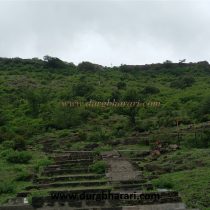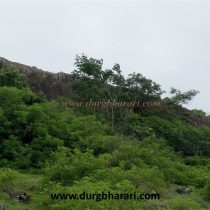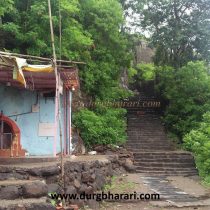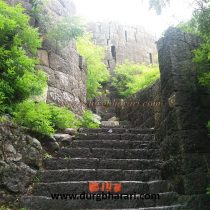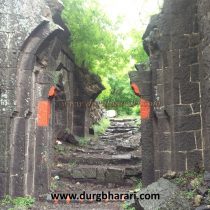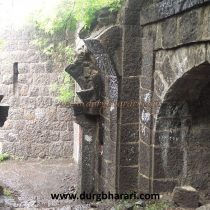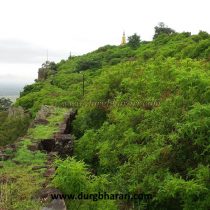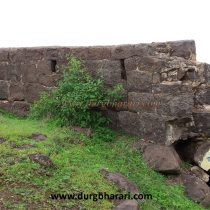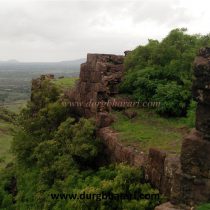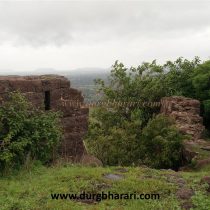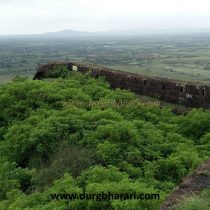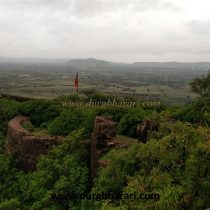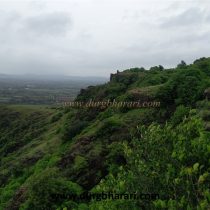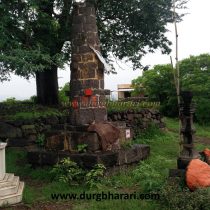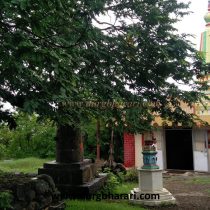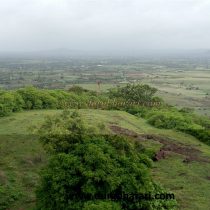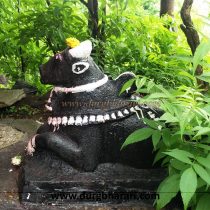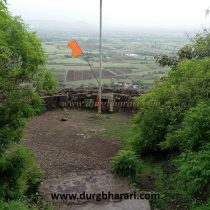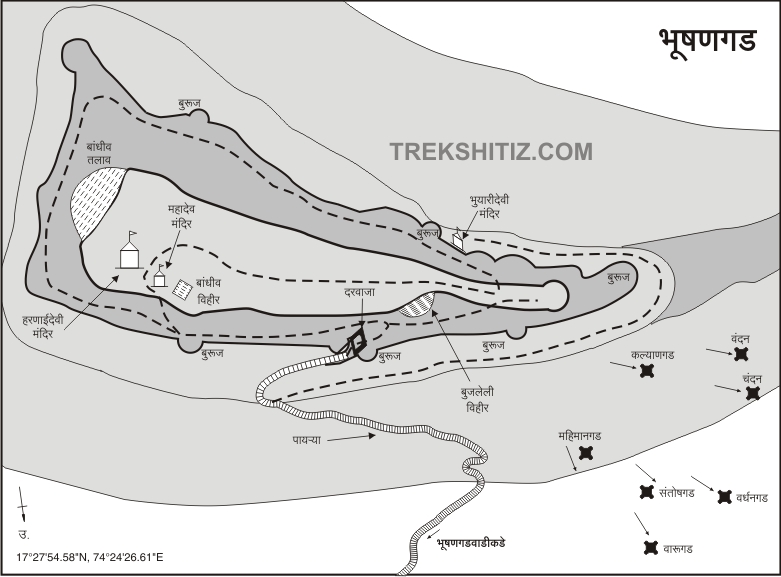BHUSHANGAD
TYPE : HILL FORT
DISTRICT : SATARA
HEIGHT : 2905 FEET
GRADE : EASY
Due to heavy rains in Sahyadri, most of the fort lovers do not explore forts during this period but the exception is Mandesh in Satara district. No matter how much it rains elsewhere, most of the fort lovers turn to this area as it does not heavy rain in Mandesh during this period. Vardhangad, Bhushangad, Mahimangad, Santoshgad, Warugad, Yamai Mandir, and Shikhar Shinganapur in this area can be easily visited if you decide to stay here for two days and have a private vehicle with you. Vaduz is a village in Khatav taluka of Satara district. To the south of this Vaduj village, at a distance of about twenty-five to thirty kilometers is the Bhushangad fort. In the distant plain Bhushangad ramparts built on the cliffs of the hill attracts our attention from afar. There is a small village called Bhushangad at the base of the fort Bhushangad itself and from this village, an unpaved road takes you directly to the steps leading to the fort.
...
These steps leading to the fort have been built by the villagers in recent times and Harnai Devi on the fort is a place of worship for the local villagers. According to the locals, Aundh's Goddess Yamai and Harnai are sisters and due to a quarrel between them, they are situated on different hills. While on the way to the main gate of the fort, this whole road is vulnerable to attacks from inside of the fort through the ramparts. This feature of the fortifications is from Shivaji Maharaj’s period. In about 20 minutes we reach the small area below the door. There is a temple of Mhasoba with a tin shed in this place. From here, a straight path leads up to the gate of the fort, while on the right side a staircase leads to the temple of Goddess Bhuyari. There is an idol of Goddess in the newly built small dome here and this idol is named Bhuyari Devi because of the basement behind the dome. There is no basement here but a small natural cave. After seeing this, one has to return to the Mhasoba temple. The gate of the fort is easily visible from the Mhasoba temple. The security of the door has been enhanced by constructing a protective wall on the side of the steps so that the front of the door cannot be easily moved. There is a bastion on both sides of the stairs and a door on the inside. The east-facing door is still intact, but the arch at the top is broken. Inside the door are guard porches on either side. You enter the fort by crossing two fortified gates. Here the path divides into two sections, the path on the right leads to the bastion at the western end of the fort and the left footpath leads to the top of the fort. A large well can be seen on the way to the west bastion. The well has achieved the dual purpose of providing stone and water for construction, while digging the well the stones that were obtained were used for the construction of the fort while after the well was completely dug, it conserved water and it too was used for construction. The ramparts of the fort are still in good condition and you can see barrage everywhere. Upon reaching the western end of the bastion, one can see the ridge below. This bastion has windows for cannons. The temple of Bhuyari Devi that we saw at the beginning is built under this bastion. Looking at the bastion, one goes to the middle of the hill and on the right-hand side, one sees a well built 20 x 20 feet quadrangle shaped stone. There is a small temple of Lord Mahadev near this well. Going further from this temple, you can see another temple of Goddess Harnai, the fort deity. In this temple, there are a 1.5 feet high idol of Goddess Harnai with a brass mask. To the right of the goddess is a black stone idol of Siddhanath. Adjacent to this temple is the temple of Lord Ganesha. In front of the temple, there is Dee[pmal. If you want to stay at the fort, there is a free dormitory in front of the temple which can accommodate 5-6 people. In the center of Machi is a large bastion with a saffron flag fluttering on the flagpole. We descend the hill in front of the temple and come to the northern ramparts of the fort. The ramparts and bastions of the fort are visible from here. Apart from this, the long trunk of Bhushangad is spread from south to north on the lower part of the ramparts. If you walk along the ramparts, you can see the rainwater harvesting lake at the bottom of the temple. From this rampart, you can walk around the entire fort and come back to the entrance. It takes about 1 hour to complete the fort round of Bhushangad. The head of Bhushangad is 2970 feet above sea level and is protected by fortifications on all four sides. The shape of the fort is roughly triangular and there are observation bastions at all three ends. The ramparts of the fort are still in good condition and bastions have been built at various places in the ramparts. The ramparts have a total of ten bastions, including the two bastions at the gate. As there is no big hill around Bhushangad, the distant plain is visible from the fort. From the fort, places like Aundh, Yamai, Mahimangad, Shikhar Shinganapur are easily visible. This fort must have been built by Shivaji Maharaj along with Vardhangad in 1676. It is mentioned that in 1676, Shivaji Raje conquered the fort of Bhushangad from Adilshah and rebuilt it. The fort, which was under the control of the Marathas, was later conquered by Aurangzeb and renamed "Islamtara". During the Peshwa period, the fort was under the control of the Pantpratinidhi. Later In 1805, Fateh Singh Mane of Rahimatpur attacked this fort. After the annexation of Satara by the British in 1848, Bhushangad came under the control of the British.
© Suresh Nimbalkar

